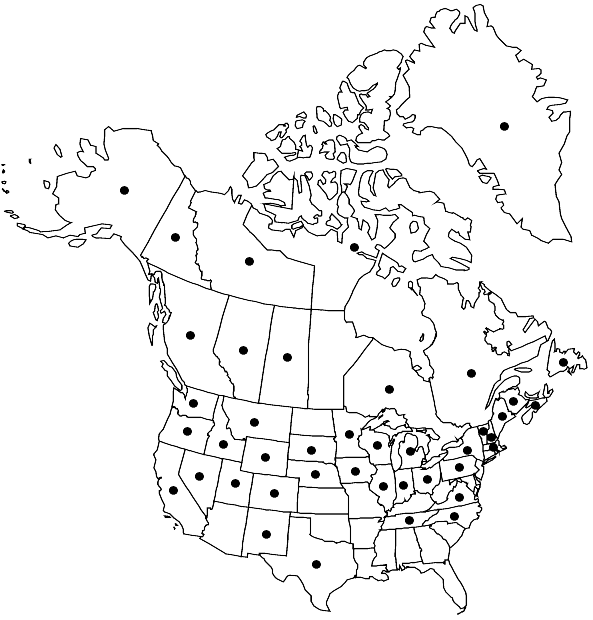Tortella tortuosa var. tortuosa
Plants green or yellow-green, appearing brown proximally, loosely foliose, some leaf bases exposed, only slightly comose at stem apex. Stems conspicuously tomentose. Leaves in tight, complex spirals when dry, appearing soft or lax throughout the stem length, not fragile or erose, leaf tips nearly all present; conspicuously undulate, fragile or not, erect- to erect-spreading when wet; undulate or plane; proximal laminal cells thin-walled and hyaline, sharply differentiated in shape and size from the papillose distal cells, which are papillose in the area of contact; leaves keeled in section, costa in apical region exposed adaxially by up to two stereid cells in width or completely covered with an adaxial epidermis of quadrate papillose cells; leaf cross section in one layer beside the costa, the lamina uniformly 1-stratose, lamina intact, the costa always differentiated into guide cells, stereids and epidermal cells, adaxial stereid layer never disappearing toward the apex, adaxial epidermal layer typically absent apically in a medial groove to two stereid cells in width.
Phenology: Capsules mature late spring–summer (Jun–Aug).
Habitat: Calcareous regions, exposed or forest-shaded rock crevices, boulders, ledges of mountains or low, peaty soil and rotten wood, dry wooded hillsides or wet areas such as Thuja swamps, banks of streams over humus, river margins, northern regions in wet tundra and solifluction lobes
Elevation: low to high elevations (100-3800 m)
Distribution

Greenland, Alta., B.C., N.B., Nfld. and Labr. (Nfld.), N.W.T., N.S., Nunavut, Ont., Que., Sask., Yukon, Alaska, Calif., Colo., Idaho, Ill., Ind., Iowa, Maine, Mass., Mich., Minn., Mont., Nebr., Nev., N.H., N.Mex., N.Y., N.C., Ohio, Oreg., Pa., S.Dak., Tenn., Tex., Utah, Vt., Va., Wash., Wis., Wyo., Mexico, Central America (Guatemala), Europe, Asia, n Africa, Atlantic Islands (Iceland).
Discussion
Variety tortuosa is striking in its crisped leaves in spirals when dry, which, together with the strongly undulate margins, is a trait absent in other species in the genus or related genera. The long, multicellular, vitreous awn confluent with the lamina is also distinctive. Only in the case of very depauperate forms is var. tortuosa confused with Tortella fragilis, which has leaves more rigid, more or less erect, not or only slightly contorted when dry and regularly fragile with propaguloid modifications in the leaf apex. Occasional specimens of var. tortuosa have large laminal cells, on average 12 µm wide and attaining 14 µm in individual cells. The leaves never have incurved margins nor are they apically cucullate as in T. inclinata or in the younger leaves of T. rigens. Throughout the range of var. tortuosa occasional puzzling specimens may be found with cell sizes to 14 µm in the distal region of the leaves (Nebraska, Alberta, Arctic specimens). Absence of adaxial epidermal cells on the costa throughout much of the distal portion of the leaf may suggest T. inclinata in the loose sense, but epidermal cells may be found at least in the mid-proximal regions of most leaves. Occasional specimens determined as T. fragilis are richly perichaetiate specimens of T. tortuosa with extremely long perichaetial leaves throughout the stem resembling the subulate propagula at the leaf apices of the former species. The tips of these leaves, however, are not swollen at the distal ends.
Variety tortuosa exceptionally has a distinct central strand but this trait is generally absent. Trichostomum tenuirostre, with leaves also spirally twisted when dry, has hyaline proximal cells that extend indistinctly only a short way up the margin by a few cells in width, and the stem is not radiculose. Trichostomum tenuirostre usually has a large and distinct stem central strand, and the apex of the leaf often has low and distant teeth.
Selected References
None.